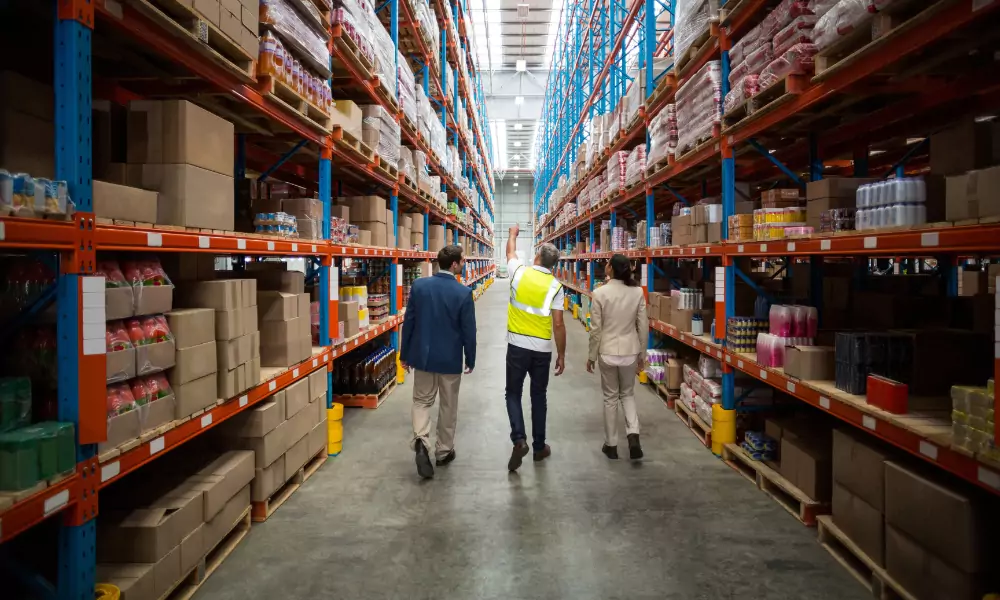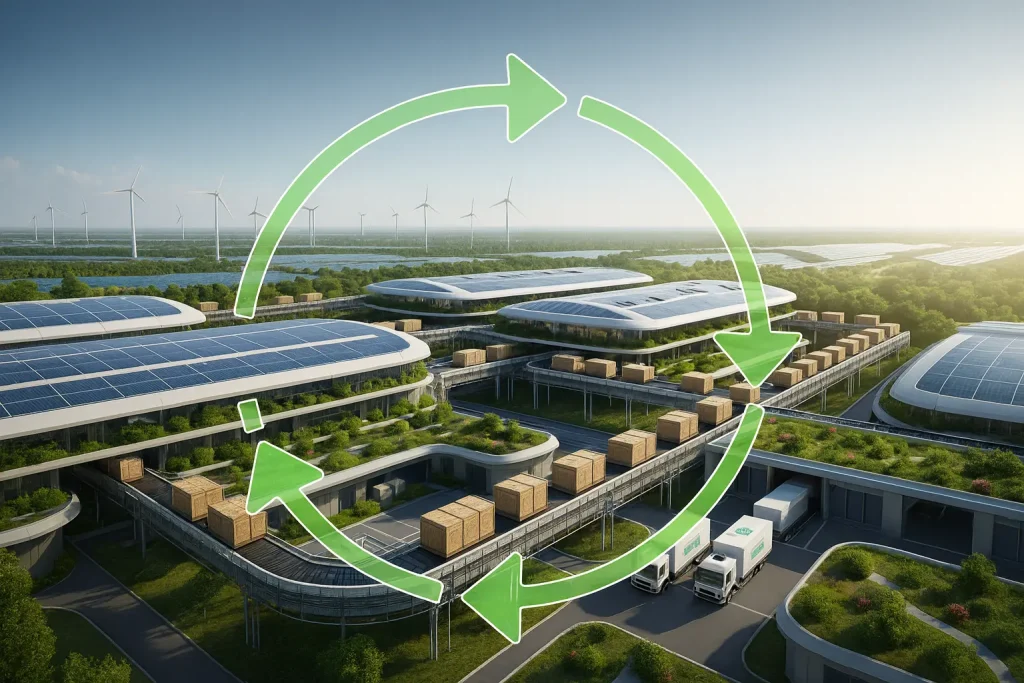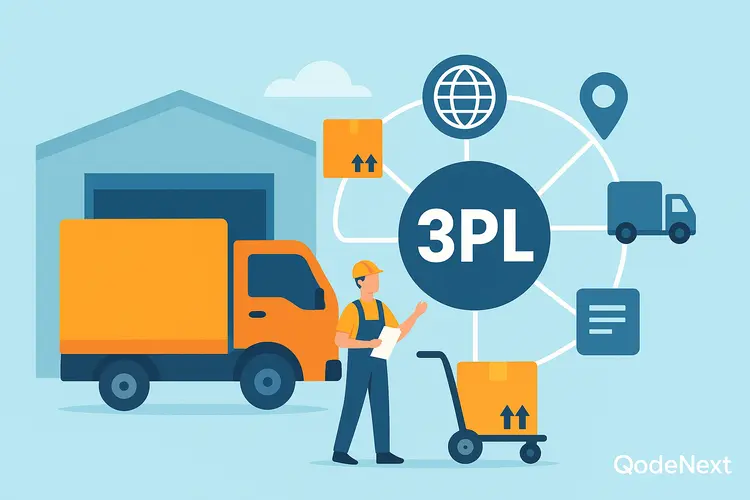
A large warehouse that allows businesses to rent space for storing and fulfilling their produc
ts. Entities can rent the space as per the amount of storage footage occupied by the product, and fulfilment services are according to the additional fee by the warehouse. These are public warehouses or third-party logistics (3PL warehouses).
Agreements are SLAs that vary from one warehouse to the other. These may include requirements for a minimum average order volume or higher storage rates for slow-moving inventory.
Let’s see the details of such a warehouse.
Public Warehouse Explained
These warehouses are enclosed structures with an initial investment. Then, they equip the warehouse with basic storage and materials like pallets, ladders, cupboards and forklift trucks, conveyor belts, weighing bridges and machines, scanners, etc. They also hire professionals and unskilled labourers with sufficient experience.
Then these warehouses also offer space to small businesses that provide storage for their products in the warehouse. They have to pay a fee accordingly. The warehouse owners and businesses enter into the service-level-agreement (SLA).
The fee is in tally with the market prices offered by other warehouses. Sometimes, they might charge an additional fee for handling, packaging and similar services.
Also, large-scale automation, mechanisation and digitisation are some of the new services that these warehouses provide. This has greatly improved inventory management.
Automation has also reduced the need for manual labour. It also updated the company in real-time with QR codes and barcodes when the products move in and out of the inventory.
So, what is a public warehouse like in real life? Let’s see an example.
Example: Amazon Fulfilment Centers
A prime example of a public warehouse in operation is Amazon Fulfilment Centres. These facilities function as third-party logistics (3PL) hubs, offering storage and fulfilment services to thousands of sellers on Amazon’s platform.
How It Works:
- Inventory Storage: Sellers send their products to Amazon’s fulfilment centres.
- Order Processing: Amazon employees manage the inventory, pick and pack the items when an order is placed.
- Shipping & Logistics: Amazon handles the entire shipping process, including tracking, delivery, and even returns.
Benefits to Businesses:
- No Need for Private Warehousing: Sellers don’t need to invest in their own storage space.
- Lower Operational Costs: Reduces expenses related to staffing, packaging, and delivery.
- Access to Advanced Logistics: Businesses can leverage Amazon’s vast logistics network and expertise.
- Scalability: Easily manage demand spikes without additional infrastructure.
- Enhanced Customer Experience: Fast and reliable shipping improves buyer satisfaction and competitiveness.
This model is particularly advantageous for small and medium-sized businesses, allowing them to scale quickly and compete in the e-commerce space without heavy investments in logistics infrastructure.
With that let’s see the various public warehouse examples.
5 Types of Public Warehouse
Here are the various types of commercial inventory warehouses:
1. General Merchandise Warehouse
These ordinary general merchandise warehouses store goods that do not require any special conditions. For instance, garments, books, furniture. They are the most common type of warehouses as they require significantly less investment in comparison to others.
2. Cold Storage Warehouse
Certain goods like perishable items, medicines, plants and even chemicals might require more extensive cold storage facilities than simple containers. Therefore, these warehouses can fulfil those requirements.
3. Special Commodity Warehouses
Such warehouses require different humidity and temperature conditions. That’s because they store chemicals and other hazardous materials. It’s quite a high investment warehouse and thus there’s not a lot of them in number.
4. Bonded Warehouses
These custom warehouses are the ones where you store your imported goods until you can sell them. The warehousing fee is collected from the sale proceeds.
5. On-demand Warehouses
Storage space in these warehouses can be acquired on-demand, often in response to sudden changes in supply and demand or other urgent needs.
All these types of warehouses come with their respective functions and benefits. Shall we see a few of them?
4 Advantages of Public Warehouse
Purchasing and constructing a private warehouse can be highly advantageous, but only on certain conditions. The company must have the necessary capital, workforce, and expertise to build and operate it. Often, companies find it more beneficial to contract with a warehouse partner for these services. The benefits of public warehousing include:
1. Cost
There is no cost of expenses associated with buying or building a storage facility. Therefore, 3PL warehouses are a cheaper option. This affordable warehousing option is a competitive advantage for small to medium-sized companies.
While large businesses have the capital to get custom solutions, smaller businesses do not. And that’s where public storage is a good option for fulfilment space and stocking items without large upfront investments.
2. Location
Finding space to build a private warehouse is becoming increasingly difficult. This scarcity makes it even harder to secure a location that aligns with your logistics goals.
A well-placed warehouse is crucial for achieving fast delivery times and easy access to transportation hubs like highways and airports. On top of that, warehouse location can impact your ability to recruit qualified workers. Talent pools vary significantly by region, so this factor deserves attention when deciding between private and public warehousing.
Since public warehousing can be any storage place that can rent itself out for some time, the number of public warehousing sites is limitless, as compared to that of private warehouses. This one benefit may make or break the case depending on the warehousing models for you.
3. Capability
The process and logic behind storing inventory are quite simple. Things get more complicated when a company needs special services and additional storage space. These services usually require special equipment, resources, systems or other processes and tech to complete their task.
A warehouse that specialises in a particular type of fulfilment can have these special tech systems. Such systems can prove to be difficult to implement on your own without a huge investment.
For instance, most of the warehouses have a management system that digitally tracks all their inventory. This system has tools like barcodes and RFID tags which are highly complex with a swath of capabilities. It helps the warehouse personnel to not only track the items but also help in recalling and sorting out damaged goods.
But to implement such technology, you would need an expert. A warehousing solution provider is the one you should be looking for to get such expertise.
4. Scalability
The most common billing method for all the functions of public warehouse is based on the total amount of floor space utilised. This can be further divided by carton or bin. As a result, your costs only rise when the total square footage or space increases. From small to medium-sized businesses focused on reducing operating costs, this scalability is highly advantageous.
Conclusion
Public warehouses provide an efficient and affordable storage solution for businesses that want to avoid the costs of owning and managing their own facilities. With features like flexible space, modern inventory systems, and value-added services, they support smooth supply chain operations and business growth.
Whether you’re a small startup or a growing enterprise, partnering with a public warehouse can help you scale faster and stay competitive.
Ready to explore how Qodenext‘s supply chain solutions can empower your business? Contact us today to learn more!
FAQs: Public Warehouse: Definition, Types, Examples and Advantages
1. What is the difference between a public warehouse and private warehouse?
A single business owns a private warehouse and handles its inventory management. It has complete control over the storage and distribution process. This makes customisation easy so they can meet specific business needs.
On the other hand, a public storage space is usually under the operation of a this-party company. It offers a shared storage space for multiple businesses. these warehouses are cost-effective as they allow both SMEs and medium-sized businesses to use their storage facilities.
2. What is the function of a public warehouse?
This type of warehouse plays a crucial role in the storage and distribution of goods for multiple businesses. It’s like a central hub where products or materials come and they need to be sorted and stored depending on which company they belong to.
3. Who owns public storage facilities?
These warehouses are commercial inventory spaces that third-party businesses have ownership over. They rent it out to other companies for storage and distribution purposes. These warehouses are a cost-effective solution for businesses that need storage space. They don’t have upfront costs associated with owning their warehouse.
4. What are the latest trends in 3PL warehouses?
Warehouses in public capacity are facing various trends, including adopting automation, digitisation and mechanisation. All of these trends have the goal of enhancing inventory management and reducing lead times. Solutions like cold storage and on-demand warehousing are also gaining popularity. Also, such warehouses are a sustainable practice minimising the environmental impacts and improving efficiency.
5. Are public warehouses secure for storing sensitive or high-value goods?
Yes, most public warehouses are equipped with security systems including surveillance cameras, access control, and trained personnel. For high-value or sensitive items, it’s advisable to opt for warehouses that offer enhanced security features and insurance options.
6. Can I customize the services in a public warehouse
Absolutely. Many 3PL providers offer customisable services such as packaging, labelling, kitting, reverse logistics, and last-mile delivery. You can choose services based on your business needs and scale as you grow.
7. Is there a minimum duration for renting space in a public warehouse?
It depends on the service-level agreement (SLA) with the warehouse provider. Some offer flexible short-term rentals, while others may require a minimum duration or order volume for more favourable pricing.
8. How does a public warehouse handle seasonal inventory spikes?
Public warehouses are ideal for managing seasonal demands. Since they allow flexible storage space, businesses can increase or decrease their inventory footprint depending on the demand cycle—avoiding unnecessary fixed costs.
9. What industries commonly use public warehouses?
Public warehouses cater to a wide range of industries such as e-commerce, FMCG, pharmaceuticals, electronics, apparel, and retail. Any business that needs flexible and cost-effective inventory management can benefit from using public warehousing services.







